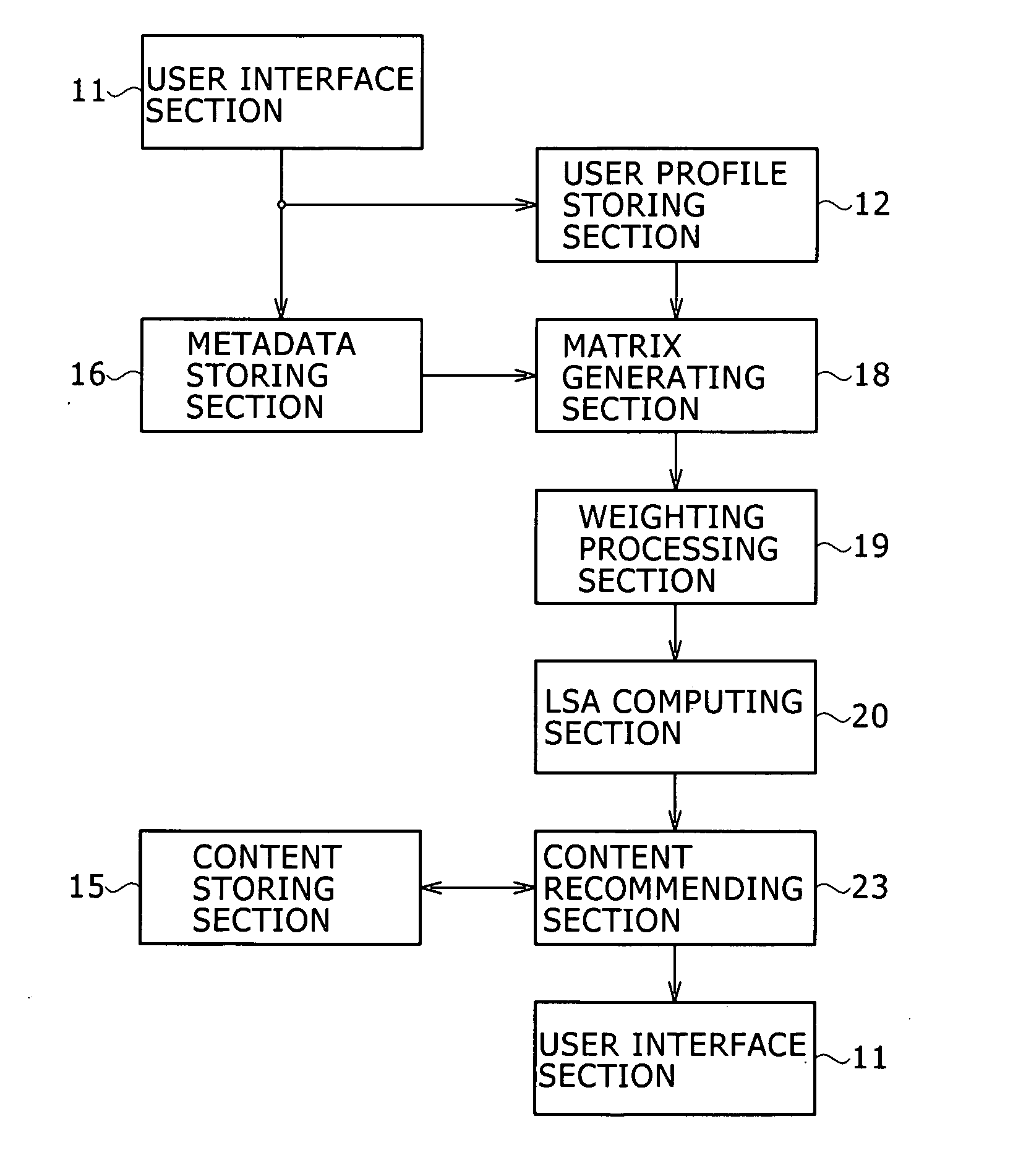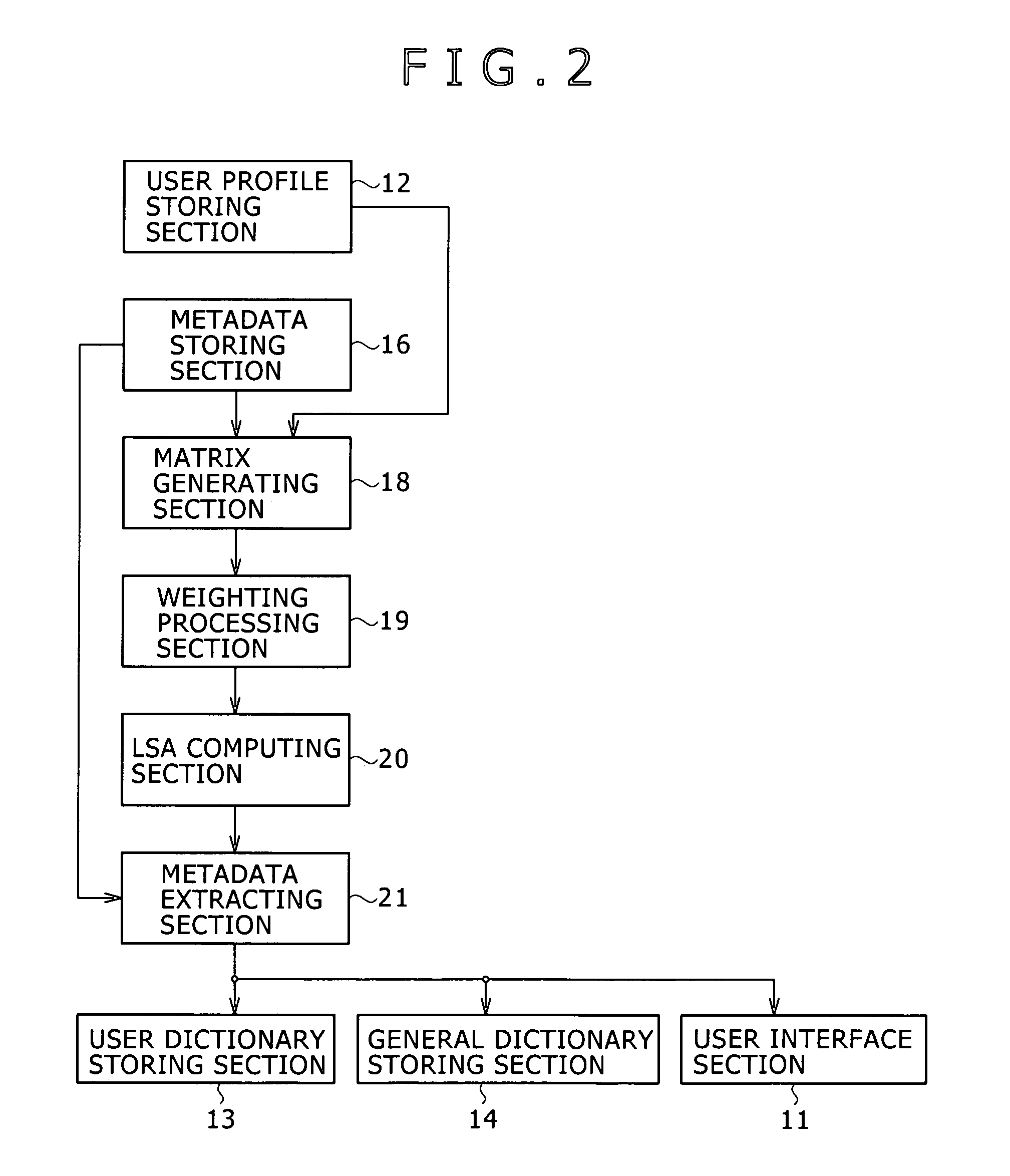Information processing apparatus, information processing method, and program
a technology of information processing and information processing method, applied in the field of information processing apparatus, information processing method, and program, can solve the problem of often deleting words that cannot be deleted disadvantageously, and achieve the effect of reducing the number of words and enabling computing
- Summary
- Abstract
- Description
- Claims
- Application Information
AI Technical Summary
Benefits of technology
Problems solved by technology
Method used
Image
Examples
first embodiment
[0114] Firstly, a first embodiment is described below.
[0115] For instance, when the content is a text, a frequency of a word appearing in the text (or a properly weighted value corresponding to the frequency) may be employed as metadata for the word.
[0116] In this case, when a new document is added as a new object for processing, among words appearing in the new text, new words not having appeared in the existing documents are added as base vectors for new metadata to the metadata space.
[0117] Namely, the number of dimensions in metadata is equalized to the number of types of words appearing in all texts regarded as objects for processing. Therefore, as the number of texts having been regarded as objects for processing increases, namely as the number of texts prepared or accessed to look by a user increases, also the number of dimensions in metadata space increases. More specifically, the number of dimensions in metadata space generally increases up to several thousands or severa...
second embodiment
[0192] Next, second embodiment of the present invention is described.
[0193] In content recommendation based on the prior art, cooccurrence of metadata is not taken into consideration, and simply a weight in the metadata matrix D obtained by TF / IDF, or a weight in an approximated matrix Dk obtained by dimensional compression of the metadata matrix D by LSA is used, and therefore only contents similar to known ones (those having been experienced or highly evaluated before by a user) can be recommended, which is disadvantageous.
[0194] To solve the problem as described above, the present inventor invented the second processing described above, namely the “processing in consideration of cooccurrence relation”.
[0195] In this second processing, the approximated matrix Dk generated by LSA or the feature difference of metadata described in the first embodiment is used. As described above, the approximated matrix Dk is a matrix generated in consideration of cooccurrence of metadata, and a ...
third embodiment
[0237] Next, third embodiment is described below.
[0238] As a generating technique of a user preference vector (UPV) for a content recommending system based on the vector space method, there has been often employed a generating technique of generating a UPV by averaging content vectors in a group of contents to which a user gives high appreciation. The UPV generated with such a generating technique is a vector making various preferences of a user blunt, and when contents is recommended using a UPV as described above, there has been a problem that a broad range of recommendation of contents is difficult to make. Further, even if a group of contents given high appreciation is subjected to clustering into a plurality of groups in order to increase variety, there has been a problem that recommendation of contents that a user has never been experienced is difficult to make.
[0239] In order to solve the problems, the present inventor invented the third processing described above, namely, ...
PUM
 Login to View More
Login to View More Abstract
Description
Claims
Application Information
 Login to View More
Login to View More - R&D
- Intellectual Property
- Life Sciences
- Materials
- Tech Scout
- Unparalleled Data Quality
- Higher Quality Content
- 60% Fewer Hallucinations
Browse by: Latest US Patents, China's latest patents, Technical Efficacy Thesaurus, Application Domain, Technology Topic, Popular Technical Reports.
© 2025 PatSnap. All rights reserved.Legal|Privacy policy|Modern Slavery Act Transparency Statement|Sitemap|About US| Contact US: help@patsnap.com



